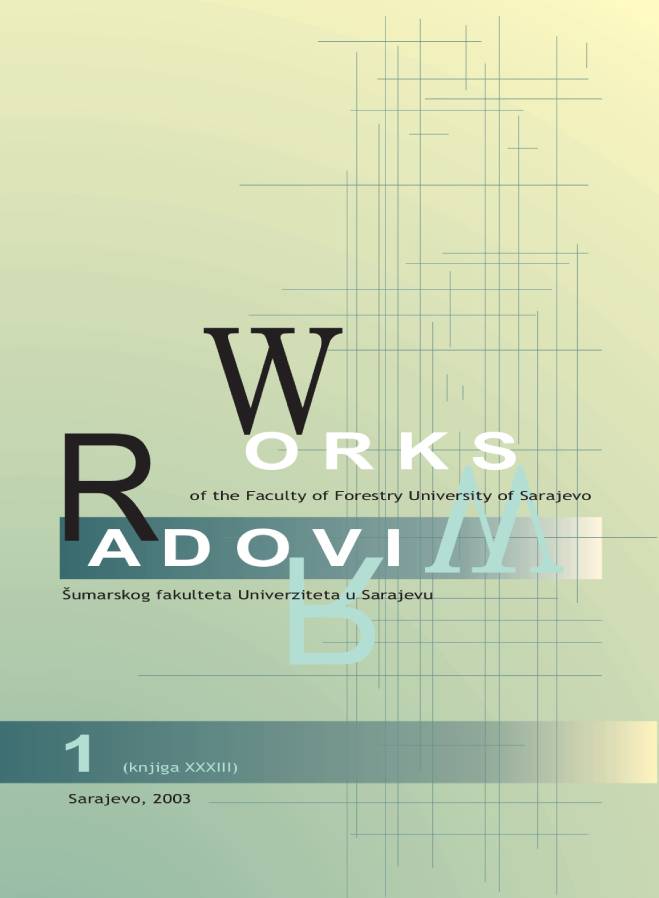Armillaria species in Central Bosnia
DOI:
https://doi.org/10.54652/rsf.2003.v33.i1.213Keywords:
Armillaria mellea, A. cepistipes, A. gallica, haploid-diploid test, mating test, Duller phenomenon, rhizomorphsAbstract
Armillaria spp. were studied in four regions of Central Bosnia during 2001. Samples ol plant tissue with mycelium, rhizomorphs and fruit bodies asmaterial for laboratory analysis were collected from or near the following tree species: Abies alba Pinus austriaca, Picea abies,Quereus petraea and Fagus silvatica
Obtained pure cultures were paired with haploid tester strains on mall-agar medium, and species identification was based on Buller phenomenon. In total, 24 isolates were analysed. I he most common species was Armillaria melea with 20 isolates. Ollier,
less Irequenlb lound species were agalica u (three isolates) and I cepistipes (one isolate)
Although A. cepistipes was expeeled in large a extent. since conifers were mam species in sampling area the results were no! surprising due to rather small area studied and (o small numbci ol isolates obtained . Further investigation of Armillaria species
focused on systematic collection of samples from larger area may bring dillerent results
Downloads
References
Fox, R. T. V. (2000): Armillaria Root Rot: Biology and Control of Honey Fungus. Intercept Ltd. England.
Gallet, J. R; B. Lung-Escarmant; P. Bracciano; B. Taris (1993): Biological control of Armillaria rootrot (Armillaria ostoyae) in pine forests in the south-west of France.
Screening in vitro of wood decay fungi. Proceedings of the Eighth International Conference on Root and Butt Rots. IUFRO. Wik, Sweden and Haikko, Finland.
Guillaumin, J. J.; C. Mohammed; N. Anselmi; R. Courtecuisse; S. C. Gregory; O.Holdenrieder; M. Intini; B. Lung; H. Marxmuller; D. Morrison; J. Rishbeth; A. J. Termorshuizen; A. Tirro; B. Van Dam (1993): Geographical distribution and ecology of the Armillaria species in western Europe. European Journal of Forest Pathology, 23: 321-341.
Shaw III, C. G. and G. A. Kile (1991): Armillaria Root Disease. Agriculture hand book No. 691, Forest service US Department of Agriculture, Washington, D.C.
Usčuplić, M. (1978): Susceptibility of Pinus strobus to Armillaria mellea (Vahl.)
Quel, and posible control. In Dimitri ed.: Proceedings of 5th International Conference on Problems of Root and Butt Rots in Conifers.
Usčuplić, M. ( 10X0): Umiranje šuma u Bosni i IHercegovini. zaštita atmosfere, 3. Sarajevo
Usčuplić, M (1000): Patologija šumskog i ukrasnog drveća. Šumarski fakultet Univerziteta u Sarajevu. Sarajevo.
West,J. S. (2000): Chemical Control of Armillaria In Root Rot: Biology and Control of Honey fungus. I of R I V. Fox. Intercept I Id. England























